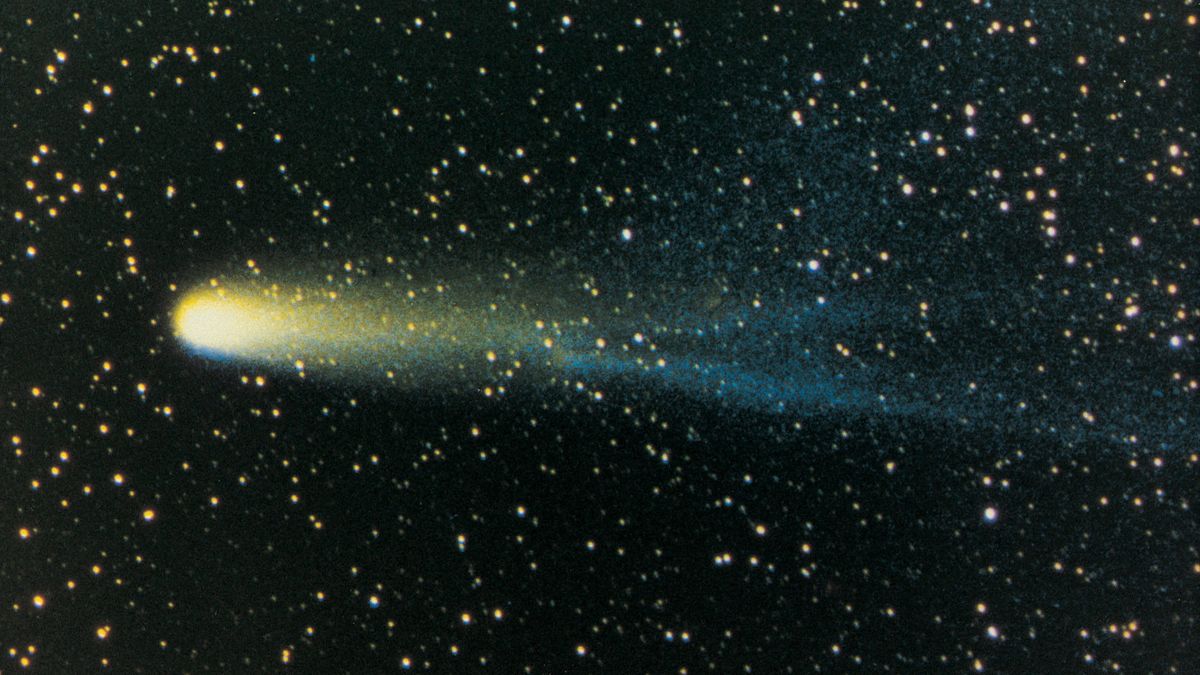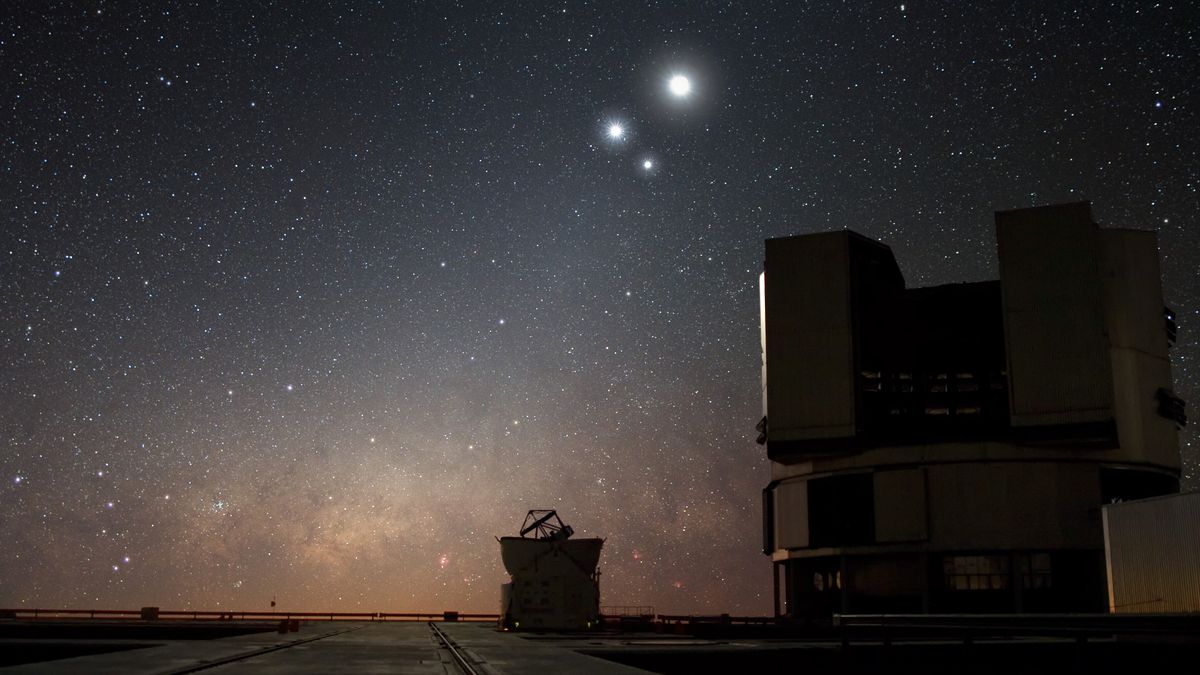According to the well-known story in the Gospel of Matthew, the Star of Bethlehem guided three wise men, or magi, to Jerusalem about 2,000 years ago. And after consulting with King Herod of Judea, the men found the newborn Jesus in the town of Bethlehem. Whether such an event ever happened in history is difficult to prove, but if so, what was the Star of Bethlehem?
That is a question that has long puzzled scholars, not only from a religious or historical perspective, but also from a scientific perspective. Many theories have been proposed, from an astronomical event to an astrological horoscope, but thanks to modern astronomy, scientists are getting closer to an answer.
“If what is in the New Testament is a historical account of something, then that historical account needs to be explained,” said David Weintraub, a professor of physics and astronomy at Vanderbilt University in Tennessee.
The Star of Bethlehem Wasn't a Comet or a Supernova
We know that Halley's Comet was visible in the sky in 11 BC, but as the Magi (Magi) walked towards Jerusalem and on to Bethlehem, it seems unlikely that they would have followed the comet, because its position would have changed as the Earth rotated, so the comet couldn't have guided them in one direction. What's more, comets were often considered bad omens in the ancient world.
"For Christmas cards, it's a nice picture of a comet with a tail, but in those days, comets in the sky were usually a harbinger of impending disaster," said Grant Mathews, a professor of theoretical astrophysics and cosmology at the University of Notre Dame in Indiana. Novas and supernovas can also be ruled out. Both events would have produced a detectable remnant, but astronomers haven't found anything that can be dated to this time.
Besides, if the Magi had followed it, they would probably have walked in a circle. “You can’t follow a star from Baghdad to Jerusalem to Bethlehem,” Weintraub said. “Stars don’t do that. They rise and set, they don’t sit in the sky.” Such an event would certainly have been seen by others at the time. While novae are supposedly quite rare, you would still expect to find other historical records of a large bright event in the sky.
Other theories suggest that the cause is a supernova in the Andromeda galaxy, as described in a 2005 study published in the journal The Observatory. While it is possible to see the galaxy with the naked eye, it would not be possible to see a star passing through a supernova and exploding within it—even with the aid of a telescope.

Halley's Comet was visible in the sky in 11 BC, but it is unlikely that it was the Star of Bethlehem
(Illustrative Image)
The "star" could have been the entire sky of stars
This leads us to one of two possibilities. The first is that the wise men were making an astrological interpretation of the sky. The fact that they needed to ask Herod for directions upon arrival suggests that there was no single bright object guiding them to their final destination.
Astrology was widely used at the time, and since the wise men (magi) came from Babylon, it is possible that they were astrologers. And because of the strange alignment of the planets and stars, they could read hidden meanings among the stars that led them to King Herod. For example, the depiction of Jupiter here may have had great significance because astrology associated the planet Jupiter with kingship, so the moon passing around it in the constellation of Aries on April 17, 6 BC, could have heralded the birth of Christ. "Modern astronomers don't give astrology any credence, but 'modern' is important in this context," Weintraub said. "What's important is what people thought 2,000 years ago. Astrology was a big deal back then. I find the most reasonable explanation is that it was astrological."

The Star of Bethlehem could have been a conjunction
The Star of Bethlehem may have been the result of a conjunction, in which two or more celestial bodies appeared to meet in the sky. Above is an image taken with ESO’s Very Large Telescope at Paranal, showing a conjunction. Here, Venus (in the center of the image) and Jupiter (to the right of Venus) are joined by the Moon.
The second – more astronomical – explanation is that there was actually a bright object in the sky – a conjunction between planets and stars. A conjunction occurs when two or more celestial bodies appear to be in the same place in the night sky from our position on Earth. These events can continue every night in a similar location for days or weeks. If the wise men had followed the moment of conjunction, it is possible that they would have been guided in a specific direction.
Astronomer Michael Molnar has suggested in his book The Star of Bethlehem (Rutgers University Press, 1999) that the conjunction theory might be correct; if the “star” was the result of a conjunction, then there are several different alignments that could be the culprit.
Perhaps the most promising, and the one Mathews favors, is the alignment of Jupiter, Saturn, the moon, and the sun in the constellation Aries on April 17, 6 BC. This conjunction fits the story for several reasons. First, this conjunction occurred in the early morning hours, which is consistent with the Gospel description of the Star of Bethlehem as the rising morning star. The wise men also lost sight of the star before they saw it come to rest over the spot where the baby Jesus lay in the manger. This could be the result of Jupiter's retrograde motion, which means it appears to change direction in the night sky as it orbits Earth.
"Normally, planets move eastward when you watch them in the sky," Mathews said. "But when they go retrograde, they turn around and go in the direction that stars rise and set at night [westward]."
Two other conjunctions at similar times also look promising. One is the conjunction of Jupiter, Venus, and the star Regulus in the constellation Leo on June 17, 2 BC. Without the aid of a telescope, the two planets would appear as a single "star," brighter than Venus and Jupiter individually. Another conjunction occurred in 6 BC, between Jupiter, Saturn, and Mars in the constellation Pisces. But neither of these last two conjunctions fits the description in the New Testament as closely as the conjunction that occurred on April 17, 6 B.C.
The Mystery of the Star of Bethlehem Continues
While scientists have ruled out several possibilities, we may never know for sure what the Star of Bethlehem was, or whether it even happened, barring remarkable archaeological discoveries. But it is a question that comes up year after year, and it will continue to pique the interest of scientists and historians for years to come.
"Nothing in science is ever closed, nor in history," Mathews said. "We may never know whether the Star of Bethlehem was a conjunction, an astrological event, or a fable to support Christianity. Maybe it was simply a miracle."
Source:
https://www.space.com/star-of-bethlehem




